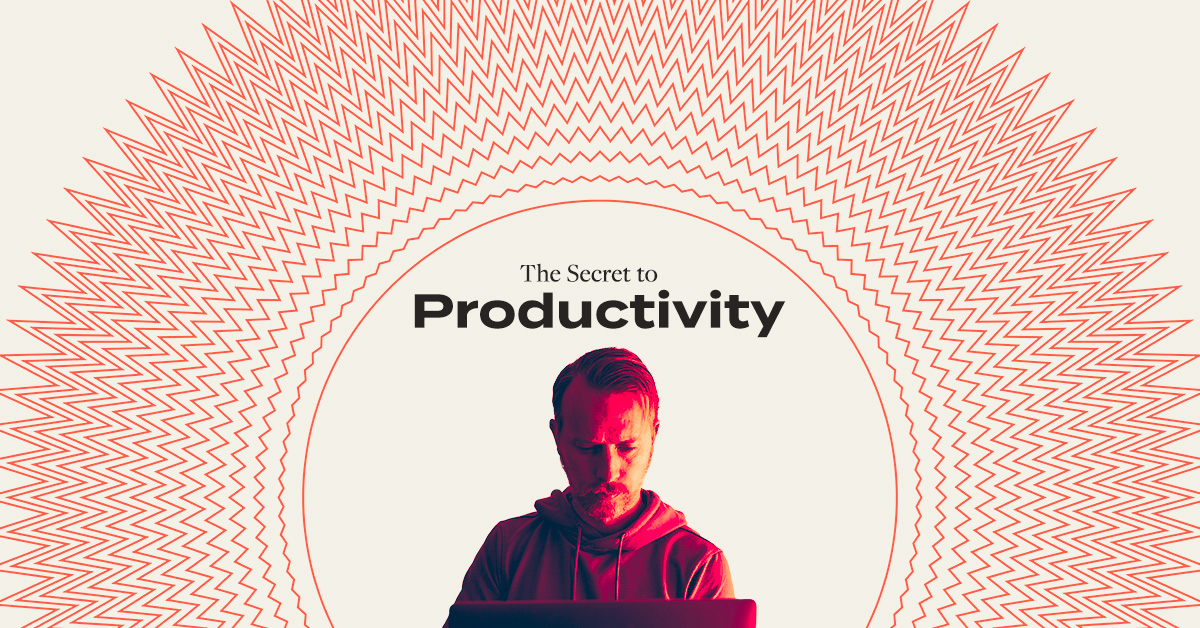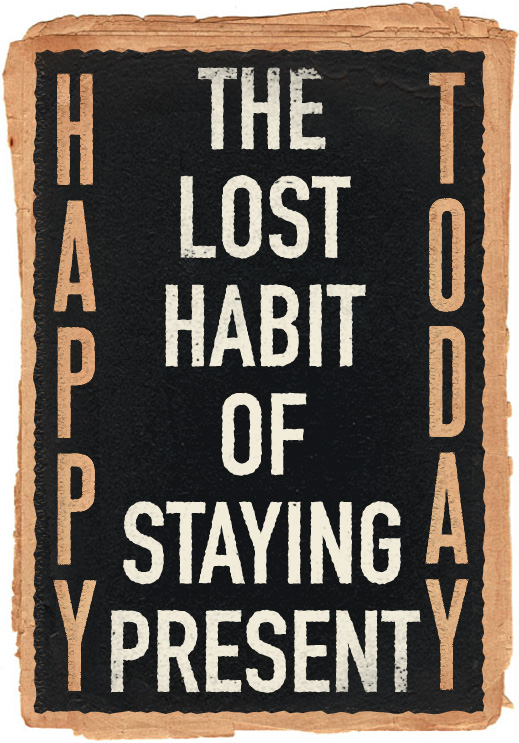So we’ve done it.
Like a true master of efficiency, we’ve reorganized, restructured, and revolutionized our schedules to make time for everything we need to get done. Now comes the hard part: actually doing it.
Whether we’re crafting our cover letters or making our meal plans, the minute we sit down to focus always seems to be the moment we remember everything else we could be doing. Unloading the dishwasher. Putting on a sweater. Finding some music to help us concentrate because we will get to work in just a minute – oh wait, there’s a video of foxes stealing cell phones.
This is an age of easy distraction, where something fascinating, infuriating, or inescapably engrossing is only a couple clicks away. Even the most disciplined of us can struggle to make a serious dent on our to-do list, full of projects that desperately need to be done. So how do we master our minds, make work happen, and maintain motivation? How do we find focus in a world where everything is designed to attack our attention?
We use the Pomodoro Technique.
The 25 Minute Pomodoro Work Cycle
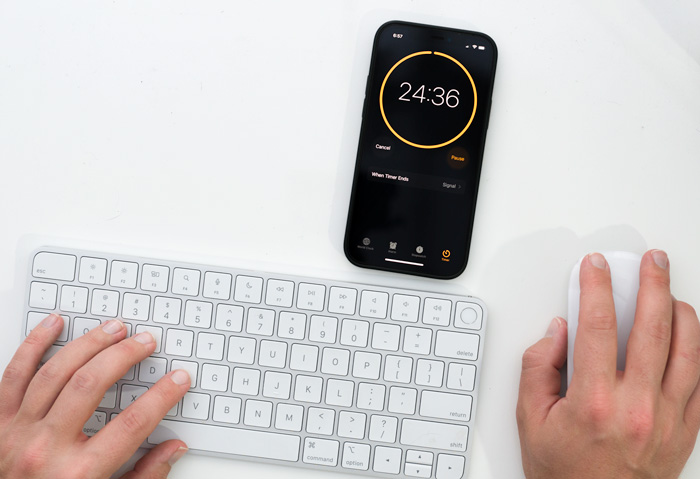
At its core, the Pomodoro technique, originally devised by Francesco Cirillo is a planned approach for budgeting our energy and attention when working through any given task. Rather than charging into a project and hoping for the best, the Pomodoro method instructs us to break our work down in twenty-five-minute increments (a.k.a, “pomodoros,” named after a tomato-shaped kitchen timer that inspired the process).
These interval sessions are broken up by five-minute short breaks designed for replenishing our energy between efforts, expanding and decreasing to help us pace ourselves. Applied, this ingenious process not only slices seemingly unending assignments into manageable pieces but actually trains us to be more productive and disciplined in the process.
Let’s take a look at the Pomodoro Technique in action – one step at a time.
Pomodoro Sets
The Pomodoro technique isn't a tactic – it’s a strategy. Sitting down for an uninterrupted 25-minute interval isn’t going to help if we’ve got a mandatory meeting in ten. Pomodoro’s purpose isn’t to simply complete projects – it’s to rewire our brains for initiative-taking and consistency. That’s why every good set needs to start with…
Step 1: Prepping and Planning
The first step in applying this technique should be estimating roughly how many pomodoro sessions a task is going to take. While it may take a couple tries to gauge the increments needed, we will improve with practice (and we get to sharpen our estimation skills in the process – a fantastic skill that can be applied to almost everything).
If we approximate a data entry project will take six pomodoros, we need to plan those bursts of productivity around the times of your workday when we’re most likely going to get distractions (high-volume times in the office, when the kids get home from school, etc.).
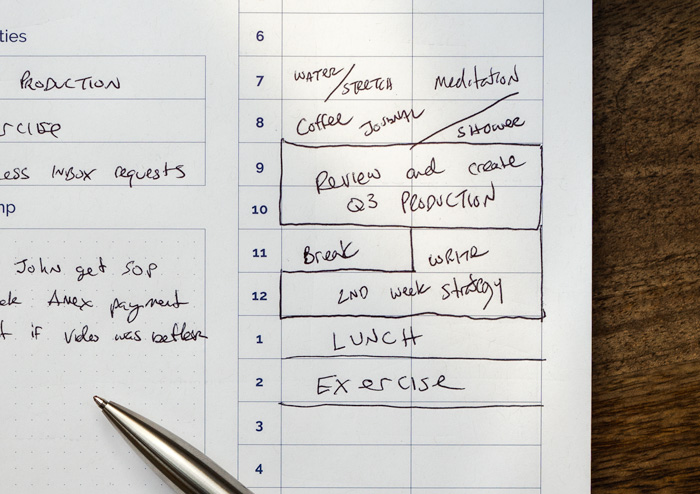
Two work sessions might need to be powered through first thing in the morning with the rest completed during the after-lunch lull. We need to separate our true important tasks from the things we can delegate or delay (for a fantastic resource, check the Eisenhower Matrix!).
Schedule set? Now it’s time to begin.
Step 2: Work for Twenty-Five Minutes
After setting the timer for twenty-five minutes, work begins. Work, and nothing else. We shouldn’t treat this as a race against the clock (ideally, we shouldn’t be checking our pomodoro timers at all) and we shouldn’t attempt to rush. These sessions are for completing as much focused work as possible – if we start sacrificing quality for quantity, we’ve missed the point.
The elegance of the Pomodoro Technique comes from it taking advantage of scientifically-proven approaches for conquering difficult tasks. Thanks to the squishy lie-machines inside our skulls, it’s easier to start and follow-through on six small commitments than it is to complete one big one, even if it’s the same amount of work.
While some Pomodoro adherents do suggest working past the timer if you feel you’ve hit your stride, our recommendation is to stick to the timer.
Remember, the Pomodoro technique is a tool for training ourselves to work when we need to, not when we feel like it.
Step 3: Break for Five Minutes
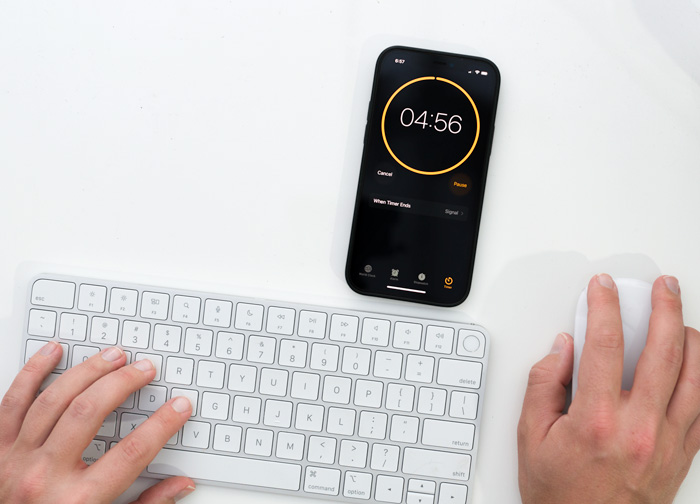
As soon as our first work session is over, set the timer for five minutes. During this break time, we should put aside the project and give our minds a chance to recharge.
Stretch. Take a bathroom break. Listen to some music or check the texts and emails that came in. We should be careful, however, to allow enough time for recovery while not giving ourselves so much time that we get entangled in something else.
Not only do these regular breaks help us pace ourselves – they give us a chance to put some distance between ourselves and our projects, letting us look at our work from a new perspective and keeping us from getting caught in ruts (a lifesaver when we’re working on creative tasks like writing or design).
Step 4: Repeat for Three More 25-minute Pomodoro Sessions, Then a Longer Break
Immediately after our 5-minute break, we need to dive back into the project – again focusing exclusively on doing our best work for a short, sustained period without worrying about the project as a whole.
After three more pomodoros have been completed (giving us four in total), our fourth break should increase to twenty minutes – letting us both re-energize more fully and address any duties that couldn’t be addressed during our shorter pauses. Following this, our rest periods should revert to the five minutes until the next four sessions.
We’ve talked before that energy, not time, is the currency we spend to accomplish anything but it’s worth repeating here. Trying to do everything at once only ensures that we’ll do nothing – causing mental fatigue and ultimately burnout out while fostering bad habits at the same time. The Pomodoro technique allows us to give our best to a task without that task getting the better of us.
But it doesn’t stop there…
Single or Multiple Tasks
The downside of any simple process is sorting through the hundreds of variations that surround them, and the Pomodoro Technique is no exception. After nearly fifty years of worldwide use, we’ll encounter the principles at play here in nearly every field and situation. But for all that evolution, one question seems to persistently pop up:
Can we use this technique to multitask?
That, or some variation on it. Can we mix-and-match pomodoros? If we’re good enough at harnessing the principles, should we stick to focusing on one thing at a time or try to handle as much as we can?
Ultimately, this will be up to the individual to decide. If someone wants to devote twenty-five minutes to data entry then leap to volunteer outreach after that, that’s a choice they could make. It’s not one, however, we’d recommend.
Remember that the Pomodoro Technique isn’t just a tool for accomplishing work, it’s a way of training ourselves in focus and follow-through. Life will, sooner or later, present us with problems so big or so complex that they’ll require our full attention. When those challenges hurtle towards us, we need to be prepared to meet them with our full concentration.
Tweaks and Alternatives
For all of the Pomodoro Technique’s enduring popularity, for all the articles praising it, there’s only ever going to be one thing that matters:
Making it work for us.
There’s never going to be any single solution or one-size-fits-all formula and getting the most out of the principles is going to come down to trial-and-error. The magic of this technique doesn’t lie in the twenty-five-minute pattern but in teaching ourselves to focus and find a rhythm that we’ll consistently reproduce. As we apply this process, we need to be mindful of how long we’re maintaining focus before our work starts to suffer, how short of a break we need to sustain quality, and how many pomodoros we can cycle through before we need an extended rest. Perhaps we’re better off with the DeskTime variation (52 minutes working, 17 minutes resting) or the Ultradian (90 minutes) work cycle.
Regardless of our final decision, the fact remains: the best way to make any technique work is to make it ours. Experiment. Adjust. Experiment again. Find what works and crush the tasks devouring our schedules. Life’s too short for us not to accomplish more by doing less, and for those of us looking to truly optimize, there’s no shortage of tools to help us in our journeys.
Advanced Techniques for Tracking Time
Pomodoro Apps
The simplicity of a phone timer is nice, but when our breaks are limited to five minutes or even less, a dedicated app can keep us from having to punch in new numbers every cycle and save us from the temptation of scrolling through our messages. For iPhone and Mac users, there’s BeFocused (free with ads) and BeFocusedPro (for $2.99). For Android, check out Focus To-Do (free, with additional purchases for extra features).
Francesco Cirillo also offers a simple timer app on his website. While there are plenty of web-based versions, keep in mind that the best applications are the ones requiring the least time setting them.
Todoist

Organization web app Todoist makes accomplishing work even easier with the option to use its built-in pomodoro features or customize a pattern of our own (thanks to their step-by-step tutorial). For those of us looking to incorporate the technique into multiple areas, Todoist is an easy way to centralize our efforts.
Productivity Cubes

There’s something to be said for a tactile reminder to keep us on track. Enter: the productivity cube – a solid timer crafted specifically around the Pomodoro Technique. Coming in a variety of designs, productivity cubes can help our habits by adding a physical component to the work-rest rhythm at an affordable price.
What tools and time management techniques do you use to complete tasks on time? Keep the conversation going in the comments!
→ Read Now:
- Scientists Studied People Who Destroyed Tasks They Didn’t Want To Do: Here Are Their Secrets
- 50 Short-Term Goal Examples You Can Actually Commit To That Will Change Your Life
- The Productivity EDC Kit: 7 Items to Turbo Charge Your Focus & Output
- The Ultimate Work From Home Space: 27 Productivity, Body Movement, and Style Upgrades to 10x Your Setup



